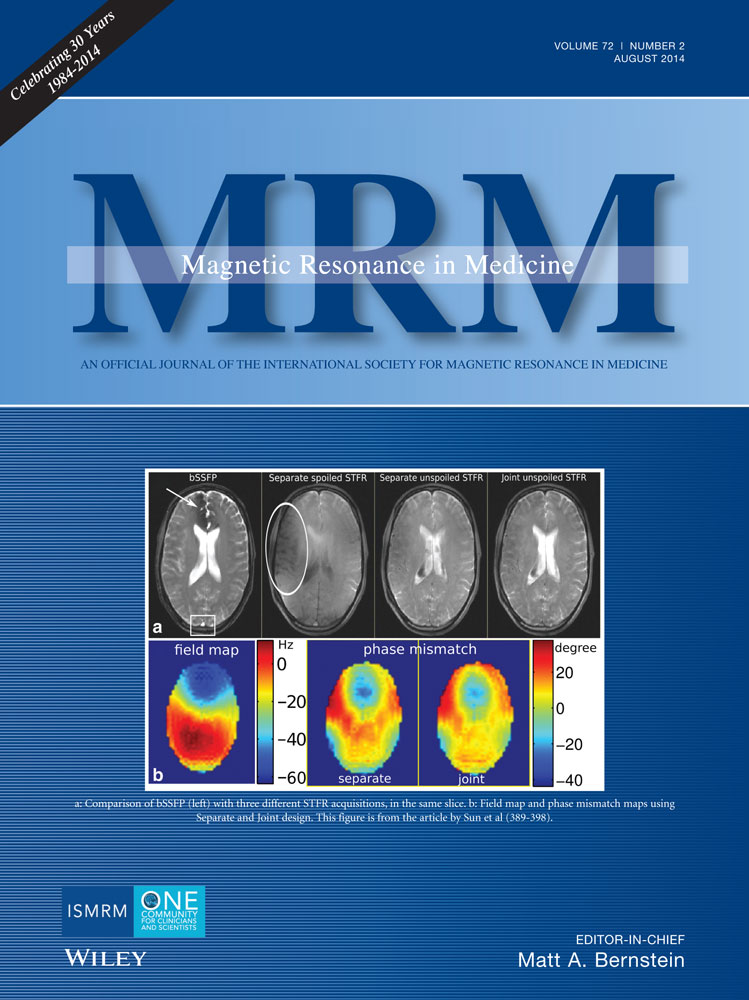Quantitative lung perfusion evaluation using fourier decomposition perfusion MRI
Parts of this note were presented as an E-poster at the ISMRM13 in Salt Lake City, Utah, USA.
Abstract
Purpose
To quantitatively evaluate lung perfusion using Fourier decomposition perfusion MRI. The Fourier decomposition (FD) method is a noninvasive method for assessing ventilation- and perfusion-related information in the lungs, where the perfusion maps in particular have shown promise for clinical use. However, the perfusion maps are nonquantitative and dimensionless, making follow-ups and direct comparisons between patients difficult. We present an approach to obtain physically meaningful and quantifiable perfusion maps using the FD method.
Methods
The standard FD perfusion images are quantified by comparing the partially blood-filled pixels in the lung parenchyma with the fully blood-filled pixels in the aorta. The percentage of blood in a pixel is then combined with the temporal information, yielding quantitative blood flow values. The values of 10 healthy volunteers are compared with SEEPAGE measurements which have shown high consistency with dynamic contrast enhanced-MRI.
Results
All pulmonary blood flow (PBF) values are within the expected range. The two methods are in good agreement (mean difference = 0.2 mL/min/100 mL, mean absolute difference = 11 mL/min/100 mL, mean PBF-FD = 150 mL/min/100 mL, mean PBF-SEEPAGE = 151 mL/min/100 mL). The Bland-Altman plot shows a good spread of values, indicating no systematic bias between the methods.
Conclusion
Quantitative lung perfusion can be obtained using the Fourier Decomposition method combined with a small amount of postprocessing. Magn Reson Med 72:558–562, 2014. © 2013 Wiley Periodicals, Inc.




